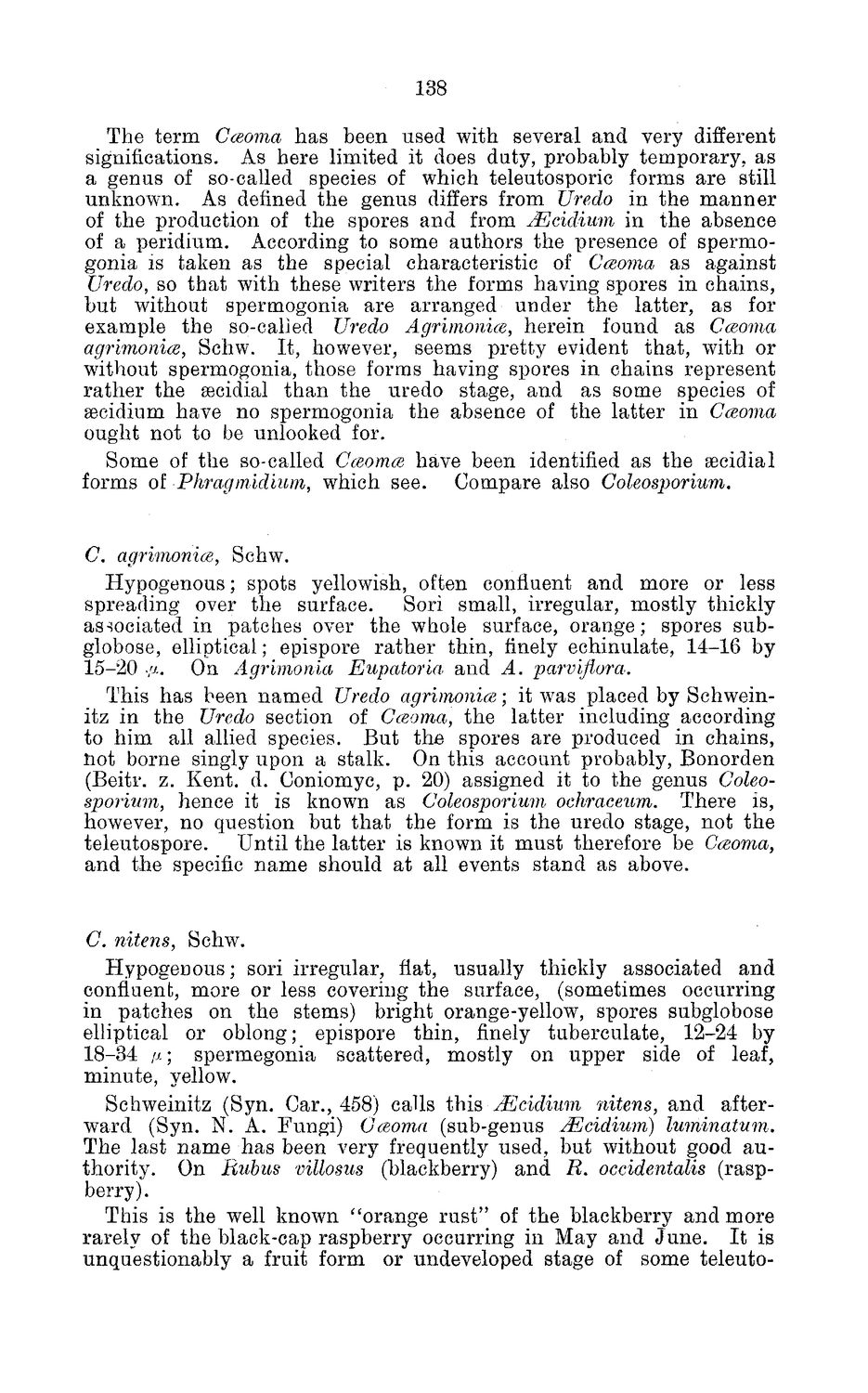| |
| |
Caption: Board of Trustees Minutes - 1884
This is a reduced-resolution page image for fast online browsing.

EXTRACTED TEXT FROM PAGE:
138 The term Cceoma has been used with several and very different significations. As here limited it does duty, probably temporary, as a genus of so-called species of which teleutosporic forms are still unknown. As defined the genus differs from Uredo in the manner of the production of the spores and from Mcidium in the absence of a peridium. According to some authors the presence of spermogonia is taken as the special characteristic of Cceoma as against Uredo, so that with these writers the forms having spores in chains, but without spermogonia are arranged under the latter, as for example the so-called Uredo Agrimonice, herein found as Cceoma agrimonies, Schw. It, however, seems pretty evident that, with or without spermogonia, those forms having spores in chains represent rather the secidial than the uredo stage, and as some species of secidium have no spermogonia the absence of the latter in Cceoma ought not to be unlooked for. Some of the so-called Cceomce have been identified as the secidial forms of Phragmidium, which see. Compare also Coleosporium. C. agrimonice, Schw. Hypogenous; spots yellowish, often confluent and more or less spreading over the surface. Sori small, irregular, mostly thickly associated in patches over the whole surface, orange; spores subglobose, elliptical; epispore rather thin, finely echinulate, 14-16 by 15-20 ./Jt. On Agrimonia Eupatoria and A. parviflora. This has been named Uredo agrimonice; it was placed by Schweinitz in the Uredo section of Cceoma, the latter including according to him all allied species. But the spores are produced in chains, not borne singly upon a stalk. On this account probably, Bonorden (Beitr. z. Kent. d. Coniomyc, p. 20) assigned it to the genus Coleosporium, hence it is known as Coleosporium ochraceum. There is, however, no question but that the form is the uredo stage, not the teleutospore. Until the latter is known it must therefore be Cceoma, and the specific name should at all events stand as above. C. nitens, Schw. Hypogenous; sori irregular, flat, usually thickly associated and confluent, more or less covering the surface, (sometimes occurring in patches on the stems) bright orange-yellow, spores subglobose elliptical or oblong; epispore thin, finely tuberculate, 12-24 by 18-34 /A; spermegonia scattered, mostly on upper side of leaf, minute, yellow. Schweinitz (Syn. Car., 458) calls this Mcidium nitens, and afterward (Syn. N. A. Fungi) Cceoma (sub-genus Mcidium) luminatum. The last name has been very frequently used, but without good authority. On Rubus villosus (blackberry) and R. occidentalis (raspberry). This is the well known "orange rust" of the blackberry and more rarely of the black-cap raspberry occurring in May and June. It is unquestionably a fruit form or undeveloped stage of some teleuto-
| |